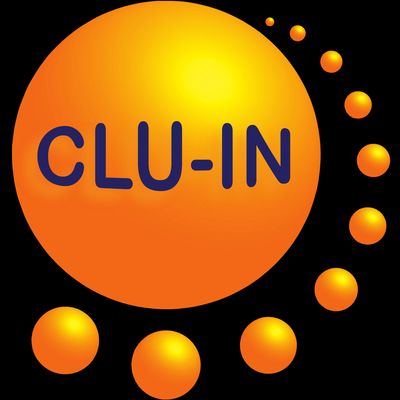Since 1998, The Contaminated Site Clean-Up Information (CLU-IN) website has presented Internet Seminars covering a wide variety of technical topics related to hazardous waste characterization, monitoring, and remediation. For select seminar topics offered since 2012, we are making complete video recordings available through our archives. This feed contains all video seminars archived in the last 12 months. For a complete list of seminars archived since 2000, please visit http://www.clu-in.org/live/archive/. Our Rehabilitation Act Notice for reasonable accommodation is available at http://www.clu-in.org/training/accommodation.cfm. CLU-IN was developed by the U.S. Environmental Protection Agency (EPA) but is intended as a forum for all waste remediation stakeholders. For more information and to view upcoming live offerings, please visit http://www.clu-in.org/live/. For a complete list of RSS feeds available on CLU-IN, please visit http://www.clu-in.org/rss/about/.
http://www.clu-in.org/live/archive
FRTR Spring 2020 Meeting, Session 2: Bioremediation Advances - New Strategies, Optimization, and Performance Monitoring (Jun 5, 2020)
The Spring 2020 meeting of the Federal Remediation Technologies Roundtable (FRTR) will be held as a two-part webinar on Friday, May 29 and Friday, June 5, 2020. As always, FRTR meetings are open to the public. FRTR's objectives for this meeting are to: Review the state of the practice of bioremediation: Broad overview of where it is commonly applied, where it is still experimental, and what are the challenges. Discuss advances in bioremediation for organic and inorganic contaminants, including new approaches, optimization, and tools for monitoring technologies to determine successful performance. Review brief case studies to demonstrate how new technologies are being applied and optimized. Session 2: Current Research and Inorganic Contaminants New Technology Briefings Superfund Research Program (SRP); Strategic Environmental Research and Development Program (SERDP); and Environmental Security Technology Certification Program (ESTCP) Bioreactor and Vertical Wetland Remediation of Metal Contaminated Mine Influenced Water (MIW) Abstract: There are over half a million abandoned mine sites in the U.S. potentially emanating mining-influenced water, contaminating streams and soils in adjacent areas. These sites present major challenges for remediation, including seasonal inaccessibility, rough terrain, lack of energy sources, high acidity, and metal concentrations (e.g. Fe, Al, Cu, Pb, Zn, Mn, Cd, etc.). To appropriately evaluate mining-impacted water treatment techniques that can provide the best cost benefit with the desired effluent quality, decision-makers usually rely on bench-scale and pilot-scale tests before designing field-scale reactors. Traditionally, the focus has been on metal removal efficiency to determine the feasibility of the proposed treatment, but it is difficult to replicate the high efficiencies of bench-scale tests with field-scale reactors. The integration of aqueous phase analytical chemistry (e.g. pH, alkalinity, metal composition, anions, sulfides, etc.) with solids analysis (e.g. elementary composition, speciation by XPS and XANES, etc.) and microbial transformation of soluble metals provides the tools to evaluate metal removal while elucidating the involved mechanisms. The benefit of this approach is that the impact of several variables (e.g. substrate volume, mass and composition, hydraulic retention time, dissolved oxygen content in the influent, etc.) can be evaluated for metal and sulfate removal. Case studies of passive biochemical reactors using actual mine water from abandoned mine sites will be used to demonstrate the benefits of this approach. Advances in Long-term Monitoring Technologies for Supporting Bioremediation Abstract: Bioremediation for heavy metals aims to immobilize them in subsurface and to reduce aqueous concentrations for an extended time. It has been investigated for many years at the Department of Energy (DOE)'s legacy sites; particularly for uranium. A variety of bioremediation technologies and associated monitoring/modeling methodology have been evaluated. Recently, hydroxyapatite-based novel permeable reactive barriers have been developed, which has shown a very promising result at the DOE's Rifle site (Colorado), showing more than two years of immobilization without rebound. During this process, groundwater monitoring has been found to be critical for understanding groundwater system dynamics, and its effect of bioremediation outcomes. We are currently developing a new paradigm of long-term monitoring approach to support bioremediation, by taking advantage of recent advances in in situ sensors and machine learning. To view this archive online or download the slides associated with this seminar, please visit http://www.clu-in.org/conf/tio/FRTRSpring20-2_060520/
